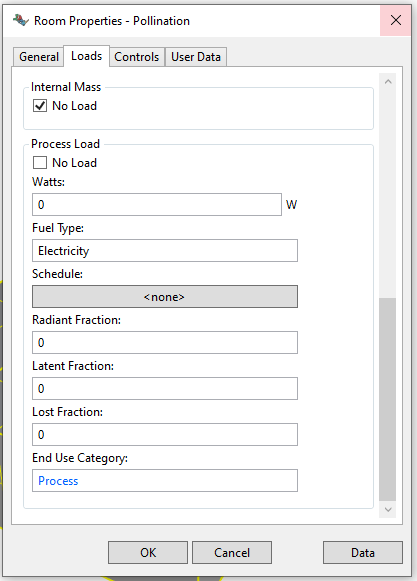I haven’t seen this question posted anywhere, either Pollination or Ladybug Tools, but I’m curious to know how people are adding multiple equipment loads to their programs.
I understand in GH you can just add a bunch of electrical or whatever fuel equipment to a program, but I don’t see a way to do that in Pollination. For example, for a residential kitchen I’d want to add a microwave, dishwasher, refrigerator, etc. Is that an issue for anyone else?
Thanks!
@chriswmackey
It would seem that, based on this thread, that it’s not really possible in pollination, is that right?
It’s actually a fairly advanced technique?
Is there a different way to do it by adding up all the loads or something? 
Hi @brentwatanabe,
If I understand your question correctly, you are looking for the electric equipment, and gas equipment under the loads tab.

Hi @mostapha,
Yes and No. In that menu we can add one piece of equipment with one schedule. But what if I have 5 equipments with various schedules in the same zone?
It sort of seems like we should add up the design wattage of the equipment and take a guess at their average schedule?
I see in EnergyPlus it looks like this when I open the End Use Shape Profiles from NREL:
I’m just trying to visualize this level of detail on a house. Maybe it’s stupid…
That’s how I have always done it. You add them all up in the same schedule. The loads are additive so it shouldn’t be a problem.
@chriswmackey or @mingbo might have a different opinion on this.
Hey @brentwatanabe ,
Primarily because it becomes challenging to QA/QC the loads when there can be multiple load definitions with different units, Programs and Rooms have only one slot to define electrical_equipment in terms of W/m2. We encourage people to update that with their assumptions about what equipment actually exists in each space in order to make it easier to check the equipment load and reuse the equipment power density across multiple Rooms or Models. However, we know that there can be specific pieces of equipment that you want to keep track of the end use separately and for this, we have an object called a ProcessLoad.
Process loads are defined in terms of an absolute value of Watts and you can specify different end use categories or fuel types in order to keep track of them separately in your EUI results. We originally designed it to help model things like industrial equipment (eg. autoclaves, MRI machines, fabrication equipment like robotic arms, etc.). But you can use it for your residential appliances or really anything that you want to keep track of separately from generic electric_equipment or gas_equipment in your model. Rooms can have any number of ProcessLoad objects assigned to them and you can see that the Rhino plugin lets you assign at least one Process Load to a Room:
In Grasshopper you can assign multiple process loads to a single Room by using several HB Process Load components sequentially. If you think your modeling workflows here are going to need several process loads per Room, maybe @mingbo might be able to move this higher on the list of things to expose in the Rhino plugin UI.
Hey @chriswmackey,
I hadn’t thought about the complexities of debugging a situation like that. Thanks for the clarification, and it makes sense to me. I had noticed the process load, because as you mentioned you can define the end use, and that seemed useful, though I didn’t realize it was for the EUI component. I thought I did it incorrectly when I was using the load balances (it’s entirely possible even if the load balance is an intended use that I did it wrong, I’m good at that…).
From the Pollination UI side of things, if you assigned an Electric Equipment for one object, say a dishwasher, and then Process load for a refrigerator, assuming you only needed 2 equipment loads, that would work right?
Otherwise it sounds like I would need to make some Grasshopper clusters of Equipment/Process loads and apply them after a base program is assigned. Does that seem like a decent workflow?
In most cases, at least at the concept level model I’m thinking of, I would only need to make a kitchen program once, so it seems like just do that with Grasshopper. I bet someone smarter could write some fancy JSON for that, but that person isn’t me!


